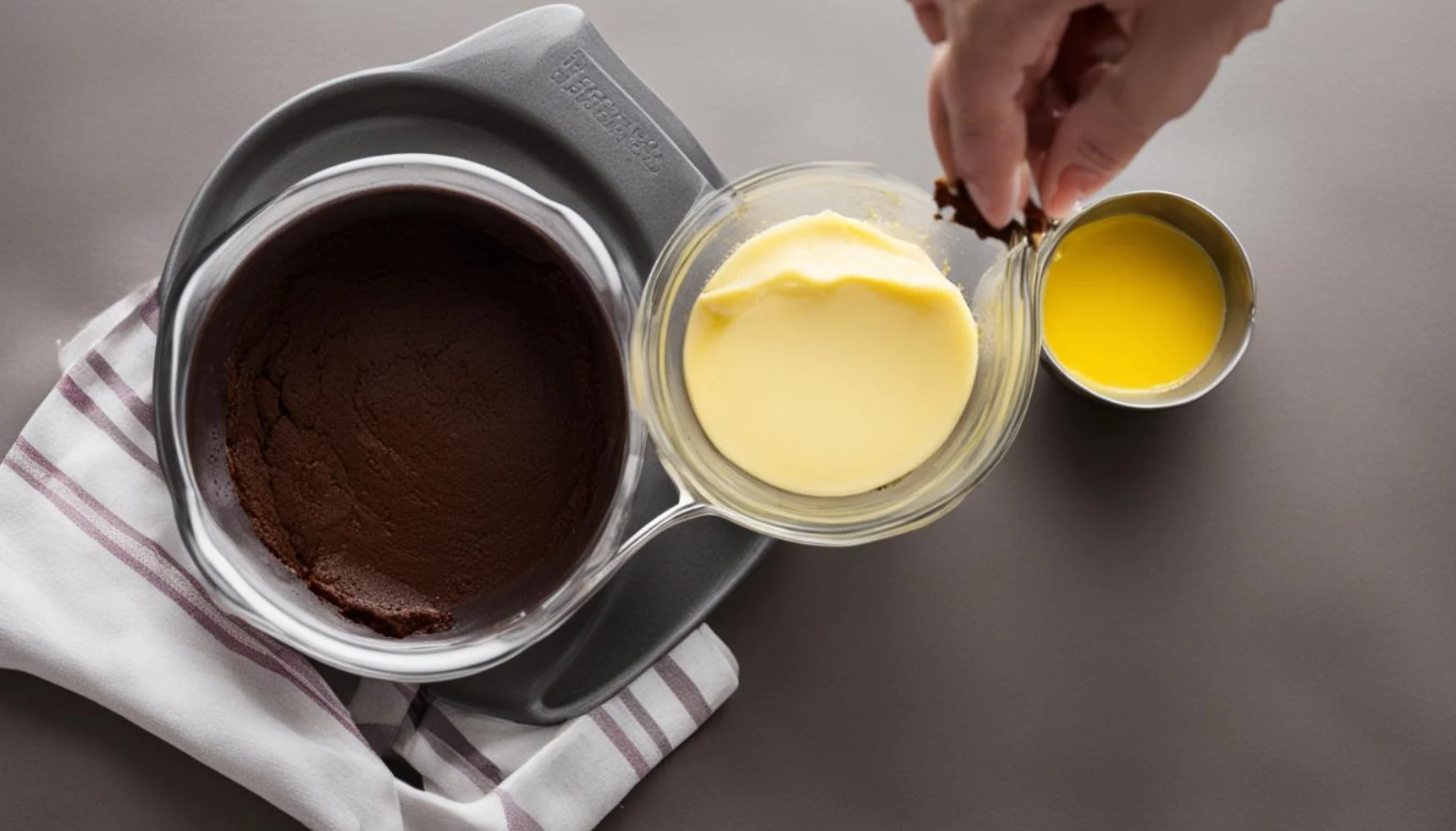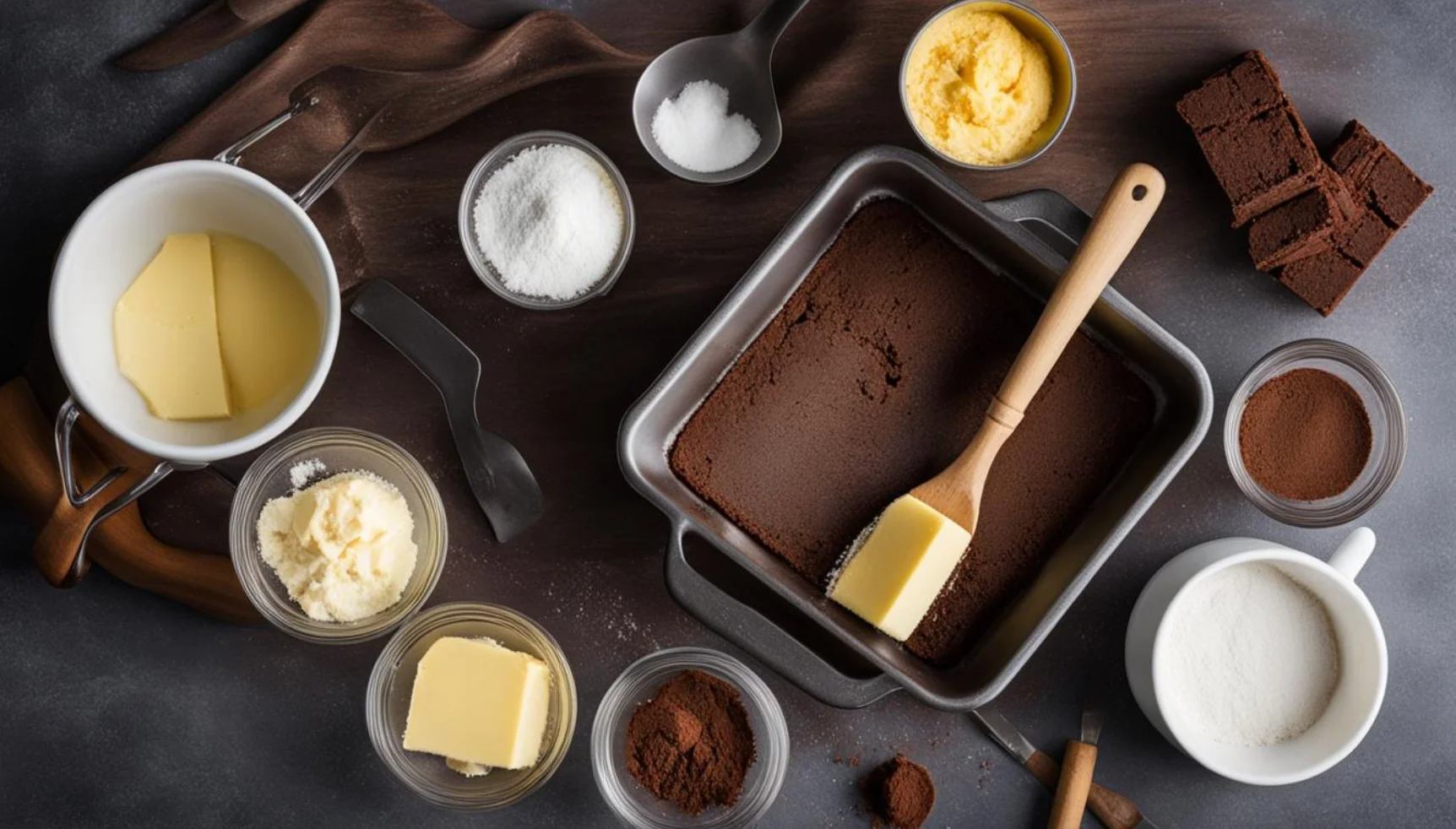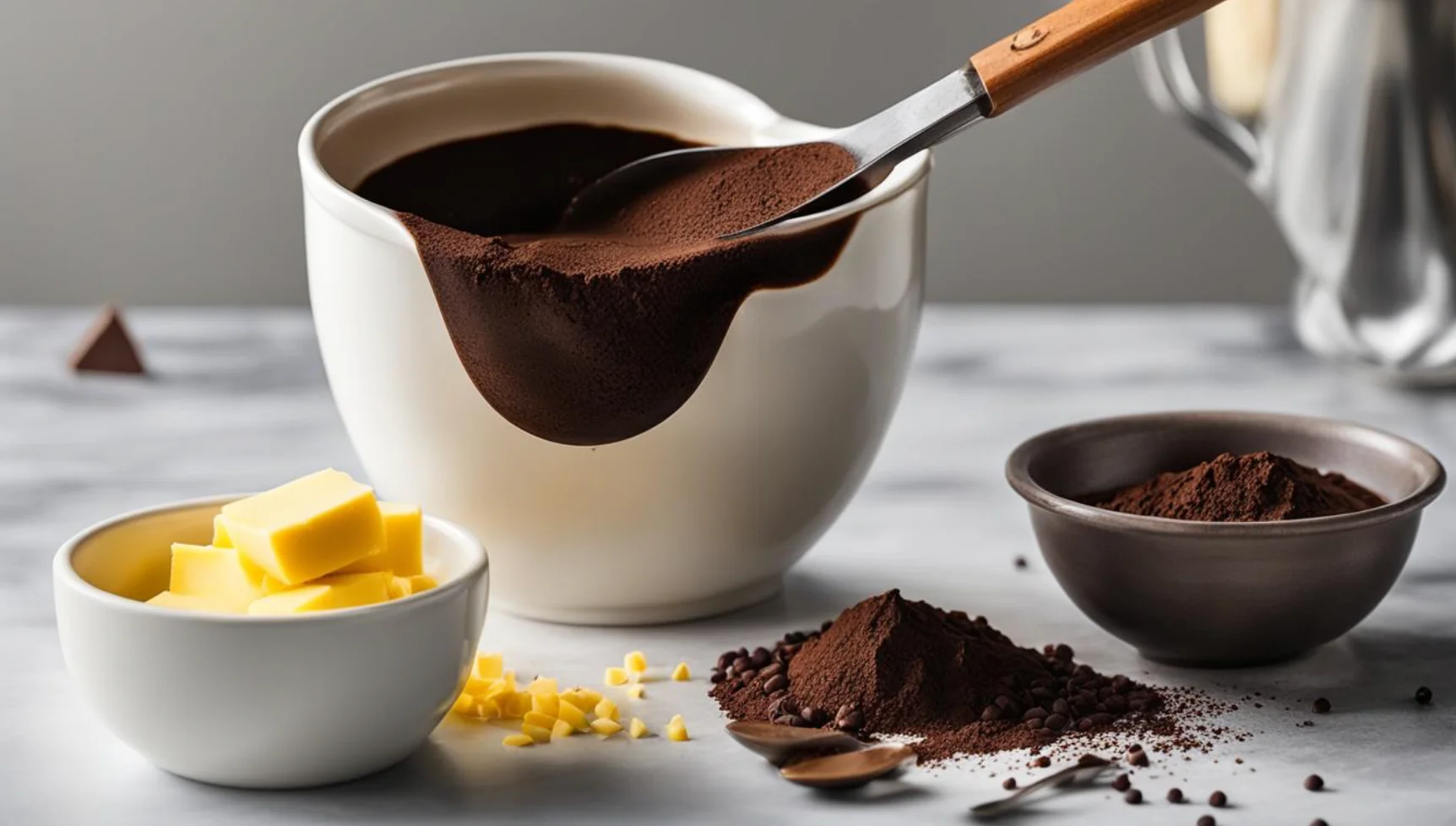If you want to make the perfect brownies, one of the crucial factors to consider is how much butter to use in your recipe. Butter plays a significant role in achieving the ideal texture, flavor, and moisture level in your brownies. Using the right amount of butter will ensure that your brownies turn out rich and delicious every time.
Whether you’re a seasoned baker or new to the kitchen, knowing how much butter to use can be a bit tricky. In this article, we’ll guide you through the process of measuring butter for your brownies and provide you with helpful tips for perfecting your recipe.
So let’s dive in and learn how much butter you should use in your brownie recipe for irresistible, mouth-watering results.
Key Takeaways
- The amount of butter you use significantly impacts the texture and flavor of your brownies.
- The ideal butter quantity depends on the recipe and desired outcome.
- Measuring butter accurately is vital for consistent results.
- Butter can be substituted with other ingredients to achieve a similar texture and flavor.
- Experiment with different butter measurements to find your perfect balance and enjoy baking irresistible brownies every time.
The Role of Butter in Brownies
Have you ever wondered why butter is such a crucial ingredient in brownies? The reason is simple: it imparts a rich and flavorful taste while also contributing to the luxurious texture that we all love.
When baking with butter, it’s essential to choose the best type, as it can affect the final result. The best butter to use for brownies is unsalted butter, as it has a lower water content and allows for better moisture control. Salted butter may alter the flavor and texture of your brownies due to the added salt.
Another factor to consider is the butter’s freshness. Using high-quality, fresh butter will ensure that your brownies have the best flavor and texture possible.
If you’re looking to take your brownies to the next level, try using European-style butter, which has a higher fat content and adds a more intense, buttery taste.
To summarize, when baking with butter, choose the best and freshest type, like unsalted butter or European-style butter, to achieve the most flavorful and moist brownies possible.
Baking Tip:
When adding butter to your brownie batter, allow it to reach room temperature beforehand. Cold butter will not mix evenly and may result in a crumbly texture.
Understanding Butter Ratios in Brownie Mix
Using the right amount of butter is crucial in determining the texture and flavor of your brownies. However, different brownie recipes may have varying amounts of butter, making it essential to understand the butter ratios in your specific brownie mix.
Butter ratio for brownie mix refers to the proportion of butter to other ingredients, primarily flour, sugar, and eggs. The right balance of butter ensures that your brownies have the perfect combination of moisture, texture, and flavor.
For instance, a butter-rich brownie recipe will typically contain a higher ratio of butter, resulting in a fudgier texture. On the other hand, a brownie recipe with a lower butter ratio will have a cake-like texture.
A brownie butter guide, in this case, will help you determine the ideal butter ratio depending on your desired texture. Below is an example of a simple brownie recipe and the recommended butter ratio:
| Ingredients | Measurement |
|---|---|
| All-purpose flour | 1 cup |
| Unsalted butter | 1/2 cup |
| Granulated sugar | 1 cup |
| Cocoa powder | 1/2 cup |
| Salt | 1/2 teaspoon |
| Eggs | 2 large |
| Vanilla extract | 1 teaspoon |
For this recipe, the ideal butter ratio is 1/2 cup as the recipe calls for 1 cup of sugar. It is typically recommended to have an equal ratio of butter to sugar for moist and chewy brownies. However, depending on your desired texture, you can adjust the butter ratio slightly higher or lower.
Experiment with different butter ratios in your brownie recipe to determine the perfect balance. However, always remember that using the right amount of butter is key to creating irresistibly delicious brownies.
Factors to Consider in Butter Measurement
Butter measurement is a crucial step in achieving the perfect brownie texture and flavor. A common mistake is not measuring accurately, which can lead to dry or greasy brownies. When measuring butter for your brownie recipes, there are several factors to consider:
- Form of butter: Different forms of butter, such as melted or softened, can affect the final texture of your brownies. Always measure butter in the same form to ensure consistency.
- Butterfat percentage: The butterfat percentage can vary among different brands of butter, which can also impact the final outcome of your brownies. Always use the same brand of butter with a consistent butterfat percentage to ensure accurate results.
- Measurement tools: Use the correct measuring tools, such as a kitchen scale or measuring cups, to ensure precise measurements.
Accurately measuring your butter is crucial for achieving the perfect brownie texture and flavor. Wrong measurement can make your brownies dry, greasy, or gritty. It’s important to keep these factors in mind when measuring butter for your brownie recipes.
Recommended Butter Conversion for Brownies

If your brownie recipe calls for a specific measurement of butter, but you only have a different form available, don’t worry; we’re here to help you convert butter quantities accurately. Whether you have unsalted butter, salted butter, or even clarified butter, we have the solution for you.
Take a look at this easy butter conversion table:
| Butter Quantity | Butter Type | Substitute Quantity |
|---|---|---|
| 1 cup | Unsalted Butter | 1 cup (2 sticks) Salted Butter |
| 1 cup (2 sticks) | Salted Butter | 1 cup (2 sticks) Unsalted Butter + 1/2 tsp Salt |
| 1 cup | Clarified Butter | 1 cup regular Butter |
Remember, using the right type and amount of butter is crucial to achieving the perfect brownie consistency and flavor. Using this conversion chart, you’ll be able to adapt your recipe without compromising the final result. Happy baking!
Tips for Measuring Butter
Measuring the right amount of butter can make or break your brownie recipe. There are a few tricks to ensure you measure butter correctly, regardless of the recipe you’re using:
- Weigh it out: The most accurate way to measure butter is by weight. Use a kitchen scale to weigh the required amount and achieve consistent results.
- Use butter wrappers: Save the butter wrappers and use them as a guide for measuring. Most butter sticks have measurement markings on the wrapper, making it easy to cut the exact amount you need.
- Chill the butter: Softened butter can be difficult to measure and may not be the right consistency. Chill the butter and use a grater to shred the required amount for precision.
- Melted butter: If your recipe calls for melted butter, measure it first and then melt it. This technique ensures an accurate butter measurement rather than measuring melted butter.
Expert tip: Always follow the specific measurements in your recipe for the best results. Small variations in butter measurement can have a significant impact on the texture and flavor of your brownies.
Adjusting Butter Quantity for Desired Texture
In brownie-making, the desired texture of the finished product ranges from cakey to fudgy. Properly adjusting the amount of butter used can help you achieve the specific texture that you prefer.
If you want your brownies to be more cake-like, you’ll want to use less butter than you would for fudgy brownies. Using more butter will give you a denser, more fudgy texture. For optimal results, experiment with different butter measurements until you find the right balance.
Note: It’s important to keep in mind that variations in ingredients, mixing methods, and baking times can also affect the texture of your brownies, so be sure to record your adjustments for future reference.
Example Butter Measurements for Different Textures
| Texture | Amount of Butter |
|---|---|
| Cake-like | 4-5 tablespoons of butter |
| Chewy | 6-7 tablespoons of butter |
| Fudgy | 8-10 tablespoons of butter |
Butter Quantity for Moist Brownies
Achieving moist, decadent brownies depends on the right balance of ingredients, especially butter. Without enough butter, brownies can turn out dry or cakey. But with too much, they can become greasy and slimy. The key is to find the perfect amount of butter that yields a heavenly combination of fudgy, moist texture and rich, buttery flavor.
So, how much butter do you need for perfectly moist brownies? While an exact measurement can vary depending on the recipe and personal taste, a general rule of thumb is to use around 1/2 to 1 cup of butter per box of brownie mix. If you use a homemade brownie recipe, it’s best to consider ratios and adjust accordingly.
Keep in mind that other factors can influence the overall moistness of your brownies. These include the type of sugar used, the quality of cocoa powder or chocolate, and the baking time and temperature. However, by getting the butter measurement right, you’ll be well on your way to creating scrumptious, moist brownies every time.
Experiment with different butter quantities to find your desired level of moistness. It’s best to start with a modest amount of butter, such as 1/2 cup, and gradually add more if you want extra richness and gooeyness. Be sure to use softened butter, which will blend more smoothly with the other ingredients and result in a more consistent texture.
To sum up, adequate butter measurement is critical for moist, heavenly brownies. With the right amount of butter and other essential ingredients, you can create a mouth-watering treat that’s sure to be a hit with family and friends.
Butter Quantity for Rich Flavor
If you’re looking to add a rich and delicious flavor to your brownies, butter is your go-to ingredient. But how much butter exactly should you use?
The ideal amount of butter for a perfect brownie recipe will depend on the recipe and your personal preference. However, a general rule of thumb is to use 1/2 to 1 cup of butter for every batch of brownies. Using more butter will result in a richer and more decadent flavor.
When choosing your butter, opt for high-quality unsalted butter for the best flavor. If you prefer a salted butter flavor, adjust the salt content in your recipe accordingly.
“Adding butter to brownies is like adding happiness to life!” – Paula Deen
Baking with Butter Substitutes
While butter adds a rich flavor and decadent texture to brownies, some may prefer to reduce or replace it in their recipe for various reasons. Fortunately, there are alternative options that can maintain the desired taste and texture of your brownies.
Here are some butter substitutes you can try:
- Vegetable oil
- Applesauce
- Yogurt or sour cream
- Pumpkin puree
- Banana
When substituting butter, it’s essential to consider the amount you’ll need. Depending on the substitute you choose, the butter measurement for your brownies may need to be adjusted.
For example, if you opt for unsweetened applesauce as a butter substitute, it is recommended to use an equal amount. So if your recipe calls for one cup of butter, you should use one cup of applesauce instead.
Note: Oil can be used as a 1:1 substitute for butter, but it is recommended to use a slightly lesser amount of oil to achieve the desired texture.
Here’s a quick reference chart to help you determine the correct amounts based on your chosen butter substitute:
By following these simple steps and experimenting with different substitutes, you can find a butter replacement that works for you and still achieve delicious, moist brownies.
Conclusion
Cooking the perfect brownies involves more than just following a recipe. It requires understanding the role butter plays in achieving the desired texture and richness of flavor. By using the perfect amount of butter, you can enjoy consistently delicious brownies every time. Remember to consider the different factors that affect butter measurement, such as the desired texture and form of the butter.
Experiment with different butter ratios to find your ideal balance, and don’t be afraid to try substitutes if you prefer to reduce or replace butter in your recipe. With the knowledge gained from this guide, you can confidently bake irresistibly moist and flavorful brownies that will impress any audience. Enjoy the process of baking and let your taste buds guide you in creating the perfect brownie recipe.
FAQ
How much butter should I use for brownies?
The amount of butter needed for brownies depends on the specific recipe you are using. As a general guideline, a standard brownie recipe typically calls for 1/2 to 1 cup (1 to 2 sticks) of butter. However, it’s always best to follow the measurements provided in your specific recipe for the best results.
What is the role of butter in brownies?
Butter plays a vital role in brownies, contributing to their texture, flavor, and overall richness. It helps create a moist and tender crumb and adds a luscious, buttery taste that enhances the overall satisfaction of each bite. Using high-quality, unsalted butter will yield the best results.
How do I understand butter ratios in brownie mixes?
Different brownie mixes may have specific butter ratios. Some recipes will require a higher butter-to-dry ingredient ratio, resulting in a fudgier texture, while others may call for less butter for a more cake-like consistency. It’s essential to carefully read and follow the instructions provided in your brownie mix to achieve the desired outcome.
What factors should I consider when measuring butter for brownies?
When measuring butter for brownie recipes, it’s important to consider the form of butter required. If the recipe calls for melted butter, measure it in its liquid form. If the recipe specifies softened butter, allow it to reach room temperature before measuring. Accuracy in measuring is vital for consistent results in your brownie batter.
How do I convert butter quantities for brownies?
If you need to convert butter quantities for your brownie recipe, it’s helpful to know that one stick of butter typically equals 1/2 cup. In case you need a smaller or larger measurement, you can use the following conversions: 1/4 cup butter equals 4 tablespoons, 3/4 cup butter equals 12 tablespoons. Keep in mind that conversions may vary depending on the size and weight of the butter you’re using, so it’s always best to refer to a reliable conversion chart or calculator for precise measurements.
What are some tips for measuring butter accurately?
To measure butter accurately, consider using a kitchen scale for precise measurements. If you don’t have one, you can use measuring cups or tablespoons. For solid butter, ensure it is packed tightly into the measuring cup or spoon. It’s also helpful to level off the top with a straight edge to remove any excess butter, ensuring you have the right amount for your recipe.
Can I adjust the butter quantity to achieve a specific texture in my brownies?
Absolutely! The butter quantity can affect the texture of your brownies. If you prefer a fudgier brownie, you can increase the butter slightly. If you desire a lighter, cake-like texture, reducing the amount of butter can help achieve that. Experimenting with different butter quantities will allow you to find the perfect balance and texture that suits your preference.
How much butter should I use to achieve moist brownies?
If you’re aiming for moist brownies, a good starting point is to follow the recipe guidelines that typically call for 1/2 to 1 cup (1 to 2 sticks) of butter. This amount of butter will help contribute to the rich moisture in your brownie batter, ensuring a delightful, velvety texture.
How much butter should I use to enhance the flavor of my brownies?
Butter adds a distinct richness and depth of flavor to brownies. To achieve a flavorful result, it’s recommended to use the amount specified in your recipe, typically 1/2 to 1 cup (1 to 2 sticks) of butter. This quantity will ensure your brownies have a satisfying buttery taste that elevates the overall flavor profile.
Can I bake brownies with butter substitutes?
Yes, you can substitute butter in your brownie recipe if desired. There are various alternatives such as vegetable oil, margarine, coconut oil, or applesauce that can be used instead of butter. Keep in mind that each substitute may affect the texture and flavor of your brownies differently. It’s recommended to follow a trusted recipe that specifically uses the substitute of your choice for the best results.

